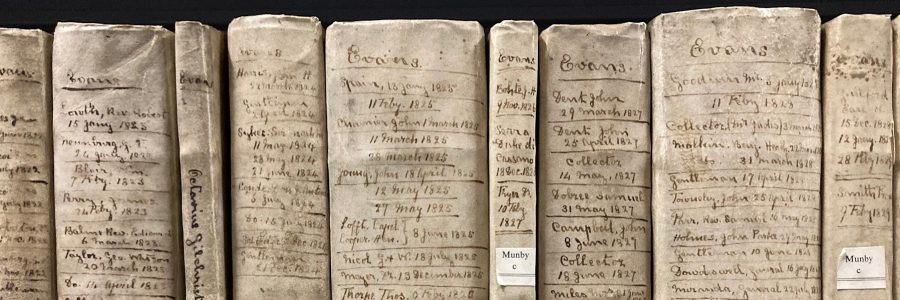
‘A valuable & extensive library’: Tim Munby’s book sales catalogues
The Library holds extensive collections of books on bibliography, including on the history of libraries and collecting. One of the primary sources for understanding the trade in and collecting of books and manuscripts over the centuries is catalogues – published by booksellers and auction houses – which were use to sell collections at fixed prices or auctioned to the highest bidder. These have come onto the Library’s shelves from a number of routes, including early donors (we have some late seventeenth-century auction catalogues used by John Moore, Bishop of Ely, to acquire books for the vast library which came to us in 1715) and via legal deposit (we still receive printed copies of auction catalogues from major London houses). An earlier post gives more information on this complicated history. Our collection was greatly enriched in 1975 with the arrival of a large portion of the library of A. N. L. (Tim) Munby (1913-74), ghost story writer, bookseller, librarian (of King’s College Cambridge) and biographer of the great nineteenth-century collector Sir Thomas Phillipps.
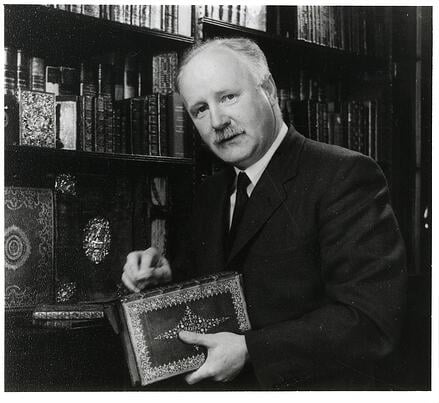
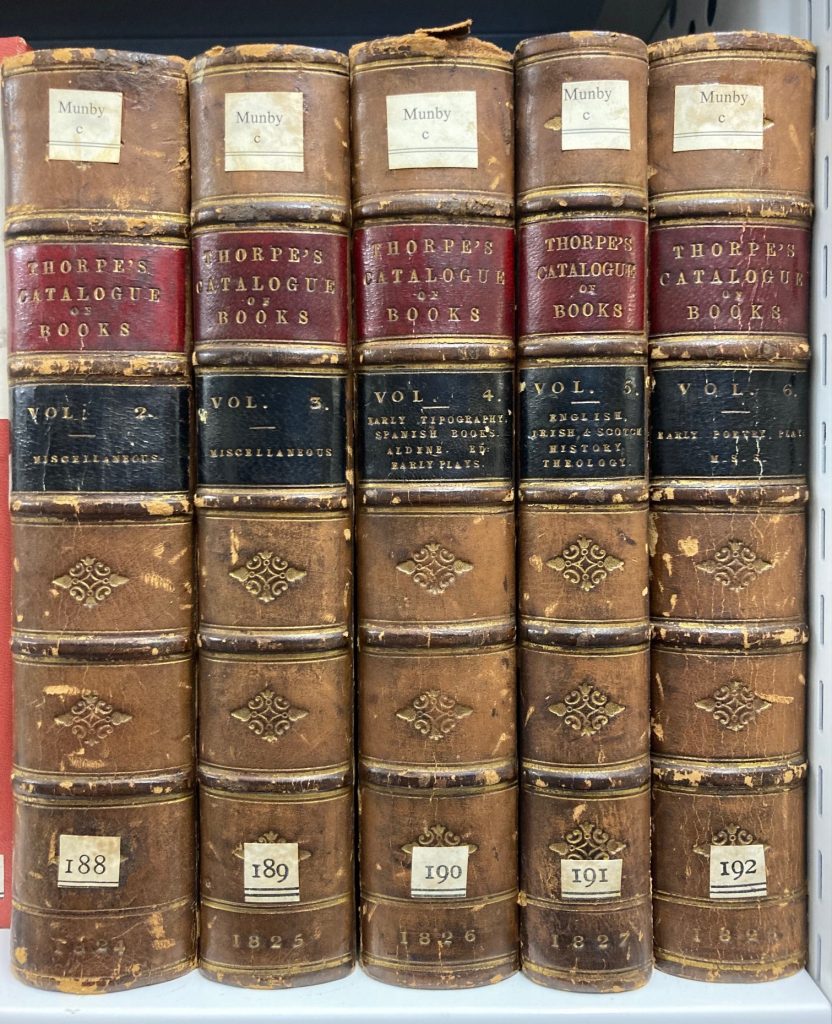
The collection contains about 1800 volumes, primarily catalogues of various kinds, and focused on English sales of the eighteenth and nineteenth centuries. Although the majority was catalogued soon after the books arrived, a portion remained uncatalogued: approximately 750 primarily nineteenth-century auction and bookseller catalogues bound up into 115 volumes, including long runs from auction house Evans (280 catalogues in 33 volumes), and booksellers Rodd (85 catalogues in 19 volumes) and Thorpe (c. 130 catalogues in 45 volumes). It was fairly standard in the 1970s for libraries like the UL not to fully catalogue material considered ‘ephemeral’ and for fifty years the only way to access these was by consulting either the typescript list of Munby’s library, or one of the Library’s copies of the List of catalogues of English book sales, 1676-1900, now in the British Museum (published in 1915) annotated with our shelfmarks.
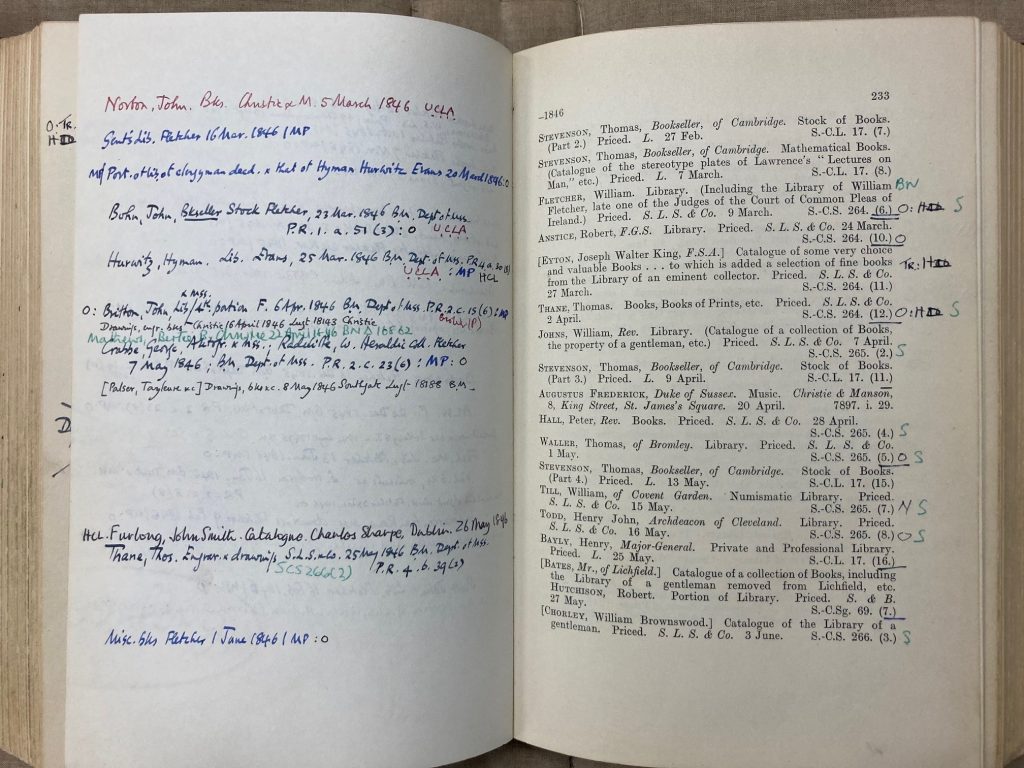
Over the last year I have been working through these volumes to create individual catalogue records for the majority, making them much more easily findable, and recording copy-specific information such as contemporary manuscript price/buyer notes and evidence of consignor names for otherwise anonymous sales. This has been slow work: as many as 20 or 25 individual catalogues have been bound together into a single volume, and this might take half a day to catalogue. Many catalogues are not recorded in LibraryHub Discover (formerly COPAC) and although the British Library has its own extensive runs of catalogues (in some cases the auctioneers’ or bookseller’s own copies) some of ours appear not to be held in any other Library (or at least, are not catalogued). This means that records have had to be created from scratch for most, rather than downloading existing ones. Of the 115 bound volumes sitting at Munby.c.114-231, the first 52 volumes (containing in the region of 530 individual sale catalogues) are now catalogued in full to item level. These generally represent libraries of named individuals (often more than one per catalogue). The sets of bookseller’s catalogues at Munby.c.169-87 (Rodd) and Munby.c.188-231 (Thorpe) have not been catalogued individually, since these are general sales rather than sales of named collections, but both runs now have vastly improved catalogue records (Rodd with simple contents lists for each volume) which will allow much easier discovery for readers. In this post I’d like to give a sense of the range of catalogues to be found and discuss a few highlights.
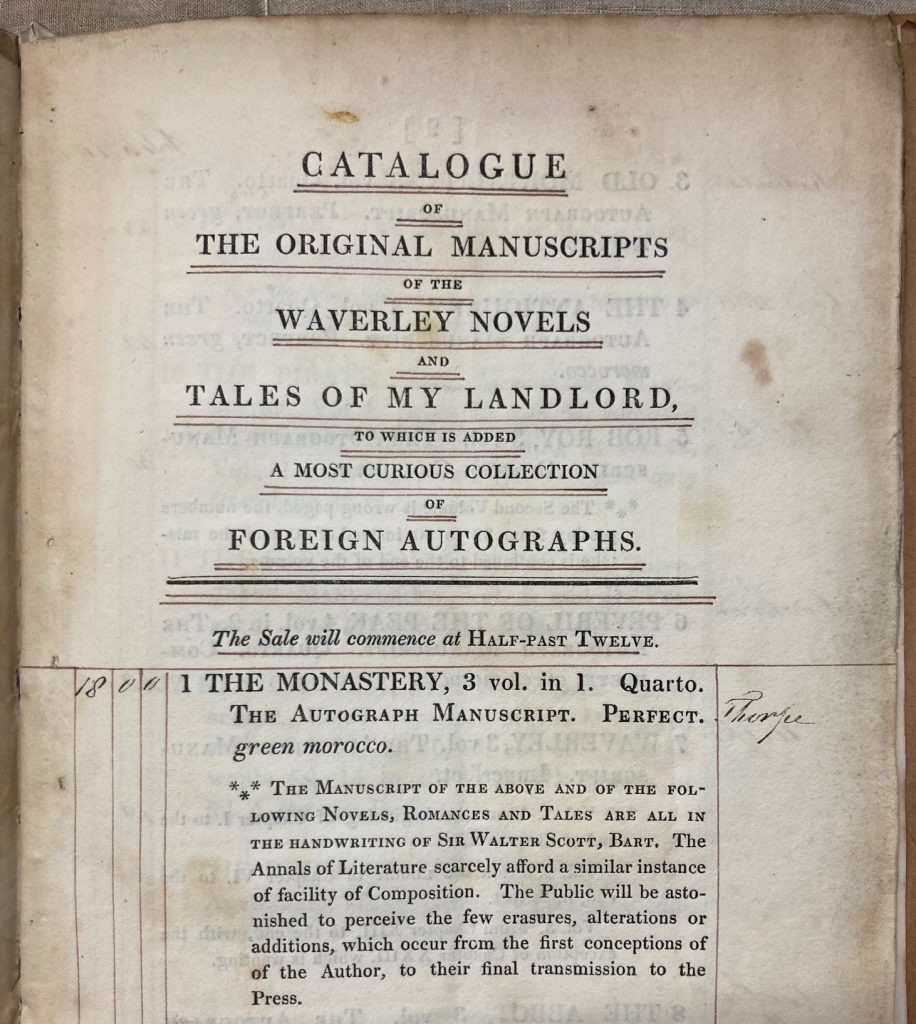
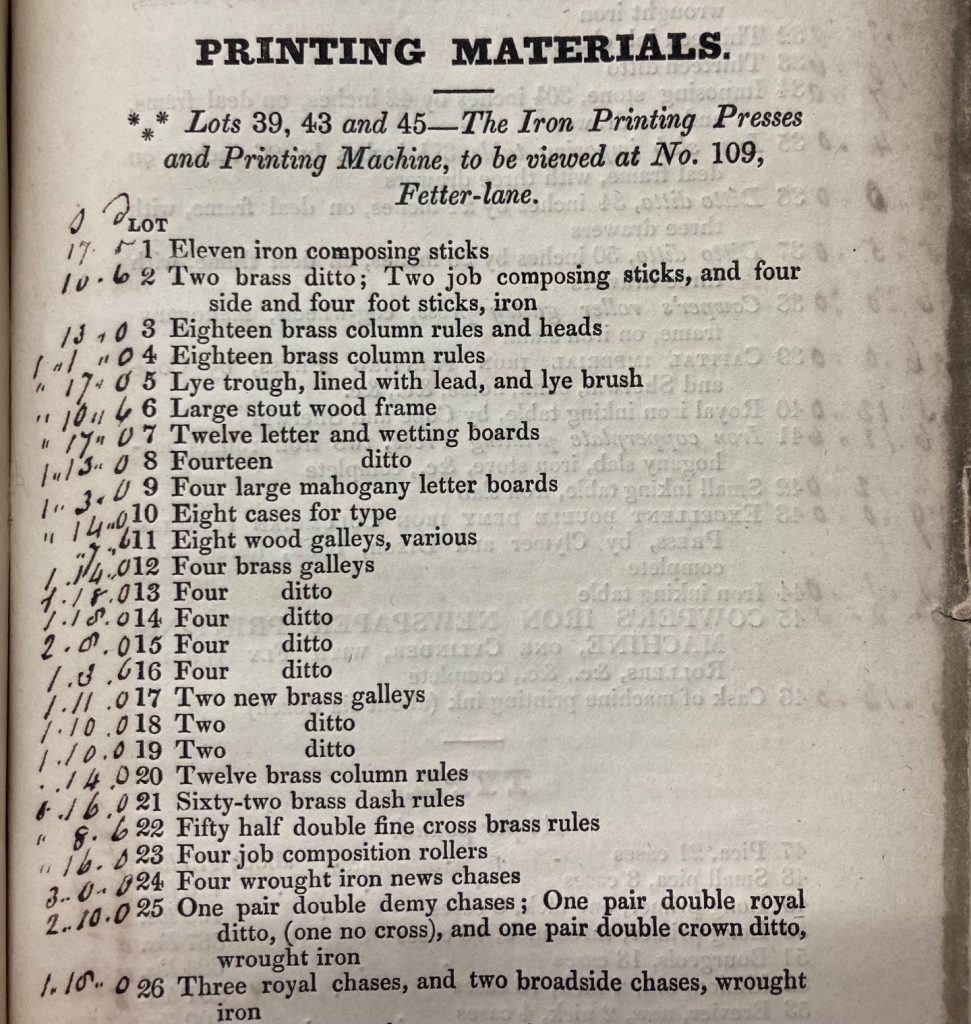
A wide range of collectors are to be found. Among the clergymen are Herbert Marsh (1757-1839), Fellow of St John’s College Cambridge and later Bishop of Peterborough; William Coxe (1747-1828), Fellow of King’s College and Archdeacon of Wiltshire; and William van Mildert (1765-1836), last Prince Bishop of Durham and co-founder of the University of Durham. Some important literary collections are represented, including the first significant sale of the manuscripts of Walter Scott’s novels, in the year before his death, at which The Antiquary made one of the highest prices (£42); the ‘valuable and elegant library’ of Elizabeth Iremonger (1757-1826), an early appreciator of the work of William Blake; the anonymous sale of ‘autograph letters, collected by a lady of title and most popular writer’, including correspondence from the so-called female Casanova, Madame St-Elme; and the posthumous sale of Lord Byron’s library in 1827, including a copy of Anacreon (Glasgow, 1783) with notes by Shelley. It was Munby’s close work with these catalogues that led in 1962 to the publication of his Cult of the autograph letter in England, which traced the growth of collector interest in autograph manuscripts.
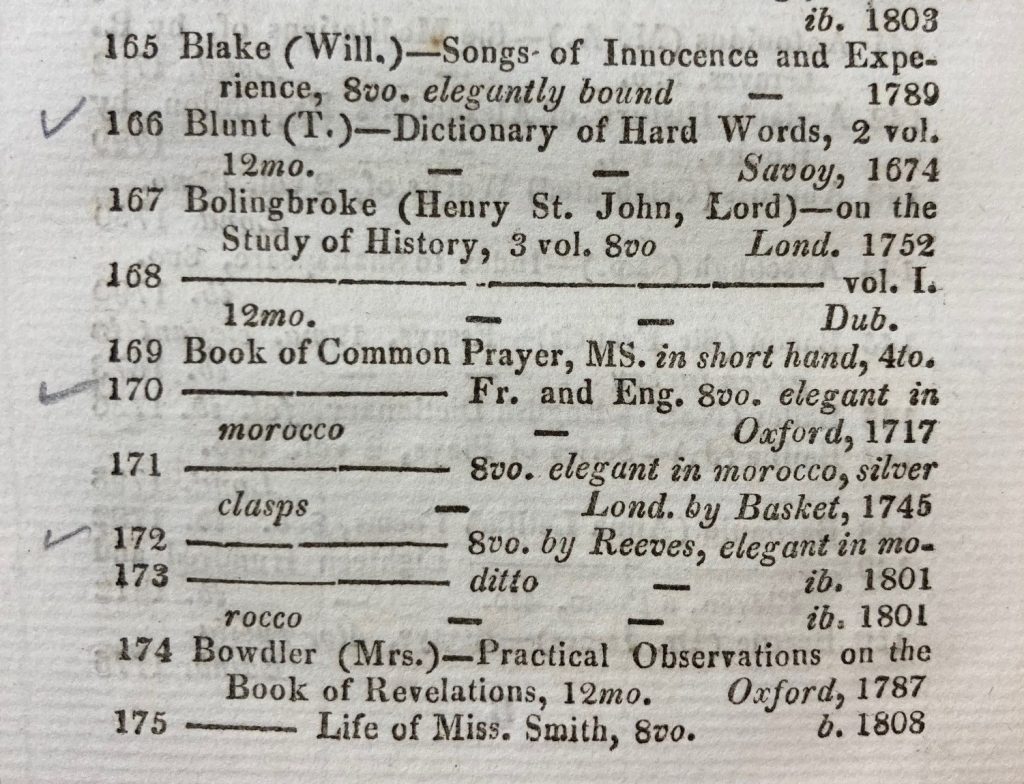
The sale of some collections came as the result of their owners meeting sticky ends: the traveller William George Browne, who owned not just books but oddities including smoking paraphernalia, human bones & riding gear, was murdered en route to Tehran in 1813; and a small fifteen-page sale in March 1824 dispersed the books of Cambridge graduate John Hull Harris of Gonville & Caius College, who had died in 1818 (the year of his graduation and marriage, aged just 24) ‘from a fall from his horse’. Collections of artwork, prints and objects are represented too: 1822 saw the sale of the collection of prints and works of natural history owned by Mary Nicol (wife of George Nicol the bookseller and librarian to King George III); in 1843 was sold ‘the stock of printing materials of Mr. John Eddowes, of Shrewsbury,’ including his printing presses, inking tables and type; and in the same year three sales dispersed the collections of books & manuscripts, music & musical instruments, and prints & drawings of the antiquarian John Sidney Hawkins (1758-1842). Miscellaneously interesting sales include an 1813 sale of books, with seventy books on angling which a manuscript note on the title page records were from the library of Thomas Gosden (bookbinder of St Martin’s Lane, London), many of them bound by Gosden himself; the library of the geologist Richard Kirwan (1733-1812) sold in Dublin 1813, who amongst other things had a pet eagle, paid his servants for every fly they killed, & had his door-knocker removed each day at 7pm to deter evening visitors; Colonel Daniel Mackinnon (1791-1836), a hero of Waterloo, is called ‘a distinguished man of fashion’ on the title page to his sale in 1820; and in 1813 Leigh & Sotheby sold the prints and drawings collection of Henry Philip Hope, Dutch banker and apparent owner of the Hope Diamond.
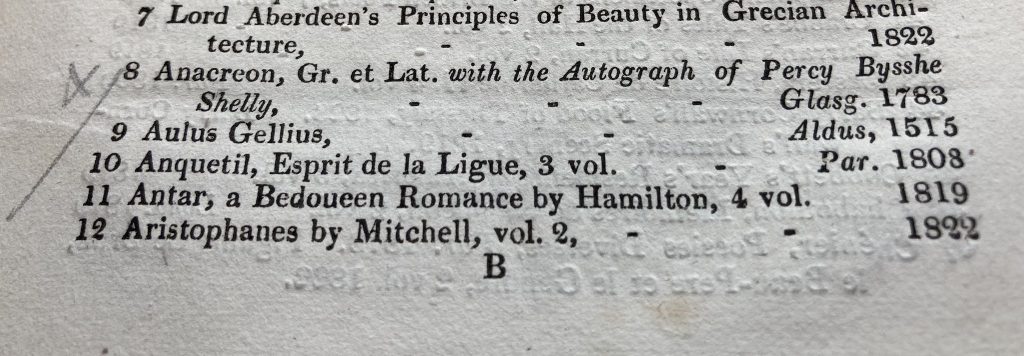
One significant feature of Munby’s collection are sets of catalogues formerly in the collection of the great Victorian collector Sir Thomas Phillipps, a self-confessed ‘vello-maniac’ whose vast collection of hundreds of thousands of printed books and manuscripts was still being sold more than 80 years after his death. Munby’s set of Evans auction catalogues (at Munby.c.117-150), Phillipps’ own, was bought from the bookseller Robinson in 1954, during the period when Munby was composing his five-volume study of Phillipps as collector. Many of the catalogues contain notes on desired purchases, prices achieved, and the initials P or TP against lots which presumably went to Phillipps. One catalogue in this set, that of the collection of the archivist and antiquary John Caley (1760-1834), contains one especially interesting pencilled note at the start of the fourth day’s sale: ‘Breakfast with Mr Howard at 10’. If this note was made by Phillipps, it gives an interesting sense of his social world – one for which he allotted little time alongside his efforts to build his collection.
Many of these catalogues are, as I hope this short piece will have shown, microcosms of the lives of their often fascinating, strange and curious owners. All catalogues are now findable in the iDiscover catalogue, and may be ordered online.
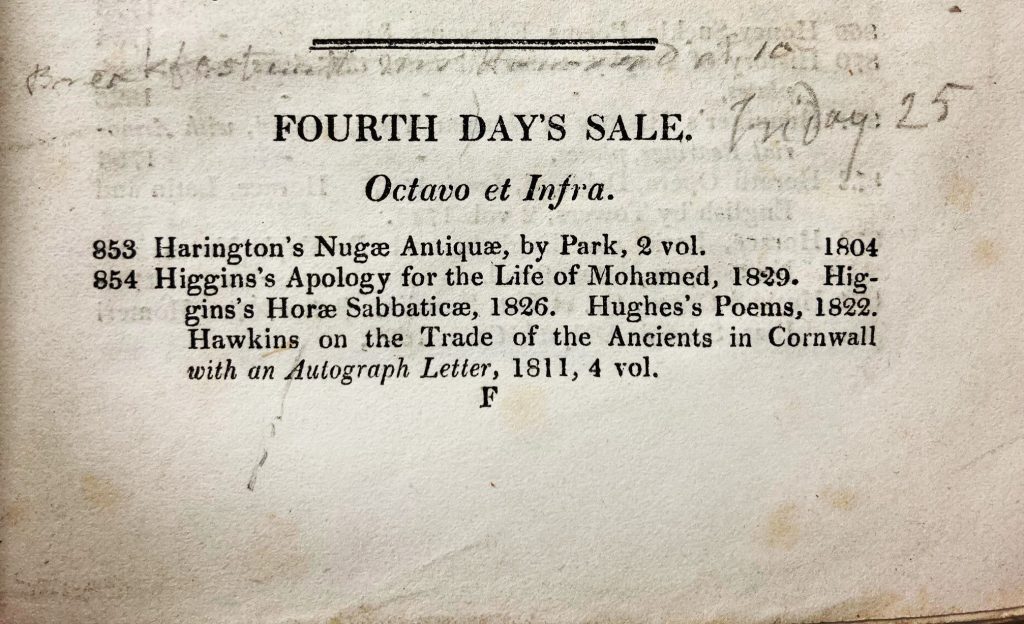

Is the Anne Lister of Shibden Hall, Halifax. book sale from 1846 included in the list ? ( see lower part of general link) https://www.packedwithpotential.org/projects/anne-lister-bookshelf#h.p_-278EVkRguKF
Hello there. Sadly not. Most of our catalogues are for London sales; that would have been a good find! Liam.